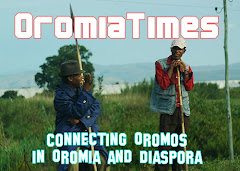by Emerson J. Sykes
NEW YORK, Jan. 26 (AScribe Newswire)
The following commentary is by Emerson J. Sykes of The Century Foundation.
The United States cannot afford to get it wrong in Somalia again. Though Wednesday’s reported U.S. airstrike against fleeing Somali Islamists may seem like a success in the war on terror, it runs the real risk of aggravating an already tense situation. The airstrike may well prove to be another misstep in a string of misguided and incoherent American policies towards Somalia. As they did during the fiasco of the short-lived U.S. and United Nations intervention in Somalia in 1993, American policy makers understand the strategic importance of Somalia, but they seem incapable of formulating and committing to a feasible plan.
Last year, the Central Intelligence Agency not so secretly supported “secular” Mogadishu warlords in hopes that they might neutralize their Islamist counterparts, but this makeshift strategy backfired. In fact, the Union of Islamic Courts (UIC), essentially a coalition of Islamist warlords, enjoyed a popularity boost after the CIA mission became public. The U.S. continues to grasp desperately in search of a new plan.
The situation on the ground in Mogadishu, and elsewhere in the country, is bewilderingly complex and constantly shifting, but United States policy should no longer be so reactive. American interests in Somalia are two-fold: first, to ensure the long-term stability and viability of the Somali state; and second, to apprehend suspected terrorists who have been hiding in the lawless territory. These objectives are distinct and require complementary strategies.
United Nations officials have called the present moment the best opportunity for peace and stability in Somalia since 1991. In mid-2006, the authority of the extremely weak U.N.- and U.S.-backed Transitional Federal Government (TFG) was confined to the small town of Baidoa, and the UIC gained control of most of southern Somalia. In December, when the UIC attacked the TFG’s last enclave in Baidoa, the Ethiopian army invervened with overwhelming force. Now, the TFG is nominally in control of the country, propped up by Ethiopian troops, and there is relative calm and order. But this window of opportunity will close quickly.
The African Union has authorized an 8,000-soldier peacekeeping force, towards which 3,500 soldiers have already been pledged by three African countries. The United States should join the European Union in promising to help finance the A.U. mission, perhaps through U.N. assessments. Peacekeepers will be necessary to avoid a power vacuum as Ethiopian troops begin to withdraw from Somali territory. Heavily-armed, clan-based militias have battled for control of Somalia for the last 16 years and thousands of combatants remain equipped and ready to pick up the fight at any moment throughout the country. But as grave as the security situation continues to be, only a political solution will bring about long-term stability.
Yemen reportedly has offered to host talks between the TFG and the deposed UIC. These talks would include neighboring states that have become deeply involved in the Somali conflict, including Ethiopia, Eritrea, Sudan and Kenya. Such a conference would be an ideal venue to reconstitute the Somali government, integrating warlords, clan elders and reputedly moderate Islamist leaders like Sheikh Sharif Sheikh Ahmed who recently surrendered to Kenyan authorities. The United States should offer financial and technical support for these meetings, but its role should be strictly behind-the-scenes: The U.S. is not considered an unbiased party, in contrast to Yemen.
The TFG has claimed that a political solution cannot be achieved until the security situation is more stable, but discerning warlords will have little incentive to disarm until they have some assurances that anarchy will not soon return. Therefore, the political solution should be pursued in conjunction with security measures, with disarmament serving as a trust-building mechanism.
For Americans, the second objective - counterterrorism - is equally urgent. The United States should continue to seek suspected al Qaeda terrorists who may be in Somalia or Kenya. Bombing packs of fleeing Islamists, however, is counterproductive. Airstrikes have proven once again, in this case, to be ineffective methods of targeted killing. And the more innocent people that die from American bombs, the more support insurgent movements - Islamic and secular - will enjoy in Somalia.
American strategists are understandably wary of putting American troops on the ground, but U.S. strikes on January 8 killed approximately 20 people and all indications are that none of the four key al Qaeda suspects were among them. The fact is that, Special Operations troops or Somali government forces on the ground are necessary.
The UIC was, even at its zenith, a loose association of leaders with a wide variety of ideological, political and economic interests. Since its defeat, moderate Islamists as well as opportunistic warlords have denounced the UIC and only the most hardcore elements remain with it.
But the UIC and al Qaeda should not be confused. Certain UIC leaders may have relationships with al Qaeda operatives, but the two groups are fundamentally distinct. Bombing UIC encampments in search of al Qaeda suspects is yet another instance of poor understanding of the complexity of the “enemy” leading to a misguided strategy.
If the United States does not immediately commit to a more comprehensive and forward-looking strategy towards Somalia, this last, best chance for peace and stability will be missed and Somalia will remain a failed state and potential terrorist haven.
Emerson J. Sykes is a Program Assistant in International Affairs at The Century Foundation.
CONTACT: Laurie Ahlrich, ahlrich@tcf.org
January 27, 2007
Subscribe to:
Post Comments (Atom)



No comments:
Post a Comment